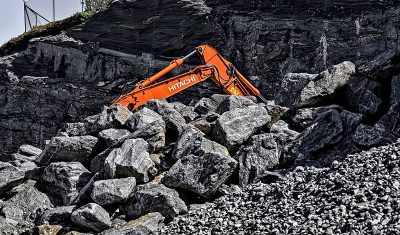The tentative agreement for Opec to cut its production is the best news the world’s oil producers have had all year. When ministers from the oil cartel announced in Algiers on Wednesday evening that they had agreed a production target lower than their current output, they signalled they were prepared to make sacrifices to ease the global crude glut, which will help all producers. They also implicitly admitted they might open gaps in world oil markets that others could fill. The details have been put off until the next Opec meeting at the end of November. A “high-level committee” will be appointed to look at how the proposed cut should be shared out between member countries — the question that is always the hardest in any cartel. Even so, there was an immediate reaction in the markets to the news: Brent crude rose by 6 per cent on Wednesday evening to about $49 per barrel. The celebrations will be loudest in the boardrooms of Houston and Oklahoma City. The US shale oil industry has been in retreat for most of the past two years but it has started to turn the corner. Since May the number of rigs drilling for oil in the US has been rising. Companies that had been outspending their cash flows for years have been bringing their finances under control thanks to cost cuts and productivity gains. If oil prices can hang on to their recent gains, American shale producers will be able to accelerate their recovery, putting more rigs back to work and bringing more wells into production. The best US shale wells can deliver acceptable returns even with crude below $20 per barrel, according to Wood Mackenzie, the research company. In the Permian Basin of west Texas there are fields that on average need an oil price of only about $40 per barrel. But the move from $40 to $50 makes a big difference. Chevron, one of the largest US oil groups, said this month that at $40 oil it could drill about 1,300 profitable wells in the Permian region, but at $50 it could drill 4,000 such wells. EOG Resources, a company that was a pioneer of the shale oil revolution, said last month that with oil at $50-$60 per barrel, it could increase its production by 10-20 per cent every year. Not every shale producer is as well-positioned for growth as EOG. US oil production is in decline because of the slowdown in drilling that began in 2014, and it is likely to keep falling into next year. But the higher prices rise, the more American companies will be able to put rigs back to work, and the more likely it is that US production will start to recover. American crude could both take market share from Opec and put a limit on oil price rises by bringing additional supply on to the market. American crude could both take market share from Opec and put a limit on oil price rises That is the central problem for Saudi Arabia, Opec’s de facto leader, and the other members of the cartel: the same problem they have faced since US shale oil became a significant force in world markets. In 2014, Opec’s members had a choice. They could cut their production, helping to support prices but losing market share to the US. Or they could let the oil glut grow and prices plunge, in the hope that investment in higher-cost sources of supply, including US shale, would be choked off. For two years, the Saudis have chosen to let prices go, and the results have been painful for Opec’s members. Now, apparently, they are prepared to try a more interventionist policy. But for as long as US shale oil remains viable, the results are unlikely to be much happier for Opec. The writer is the FT’s US energy editor Sample the FT’s top stories for a week You select the topic, we deliver the news. Source link









